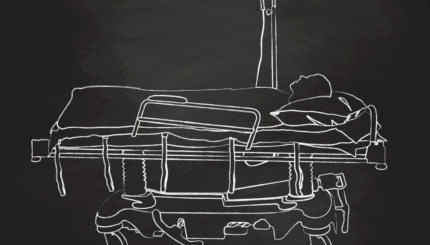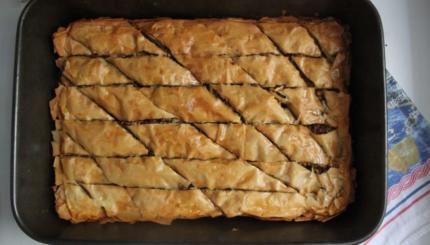Among most Sephardic communities, kriah [tearing one’s garment] is performed as soon as the mourners return home from the cemetery. The traditional meal of condolence is prepared by the burial society or family and friends. Mourners sit on the floor or on pillows, not on low stools. Daily services are held in the home and the Zohar [a mystical commentary on the Torah and other works] is studied throughout the week.
In the Syrian community, offering Turkish coffee and food to visitors is not uncommon, even though it is not the custom for visitors to bring food or gifts to the mourners. In addition, a unique tradition is followed that stipulates a visitor make either one or three condolence call(s) during shiva. A second visit symbolizes the possibility that death could return again to the family. A third visit would indicate that the second visit was only to further offer support to the family.
In the Moroccan community, visitors leaving the house of mourning say, “Min hashamayim tenuhamu“–“May you be comforted from Heaven.” At the end of shiva, a special meal and study session, called a mishmara, is held and the deceased is again eulogized and mourners are encouraged to repent. Many mourners immediately begin a year of strict religious observance. Another mishmara, complete with food, is held at the cemetery itself on the 30th day following the burial.
An interesting Iranian custom is to hold a study session known as “Tarihim” (derived from the Hebrew rahamim, mercy) in the synagogue during the week of shiva. The mourners are allowed to come to the synagogue and are often joined by hundreds of friends and relatives. The rabbi will offer words of Torah, and a short eulogy about the deceased will be given.
Reprinted with permission from A Time to Mourn, A Time to Comfort (Jewish Lights).
Sign up for a Journey Through Grief & Mourning: Whether you have lost a loved one recently or just want to learn the basics of Jewish mourning rituals, this 8-part email series will guide you through everything you need to know and help you feel supported and comforted at a difficult time.
Looking for a way to say Mourner’s Kaddish in a minyan? My Jewish Learning’s daily online minyan gives mourners and others an opportunity to say Kaddish in community and learn from leading rabbis.
Sephardic
Pronounced: seh-FAR-dik, Origin: Hebrew, describing Jews descending from the Jews of Spain.
Torah
Pronunced: TORE-uh, Origin: Hebrew, the Five Books of Moses.


